Risotto with Orange Juice is light and bright, with orange zest, juice, as well as traditional Parmesan, onion, shallots, broth, and butter.
Perfect by itself or as a side to any protein (I’m developing a Pork Tenderloin with Orange Marmalade Sauce to go with it so stay tuned). I came across the recipe while perusing Lidia Bastianich’s Lidiasitialy.com and it’s been my new favorite ever since. I changed some of the ingredient amounts slightly to make it even more creamy, and explain some of the steps in more detail than Lidia does in her version, also after making it so many times, I add some extra tips to help you obtain consistent success.
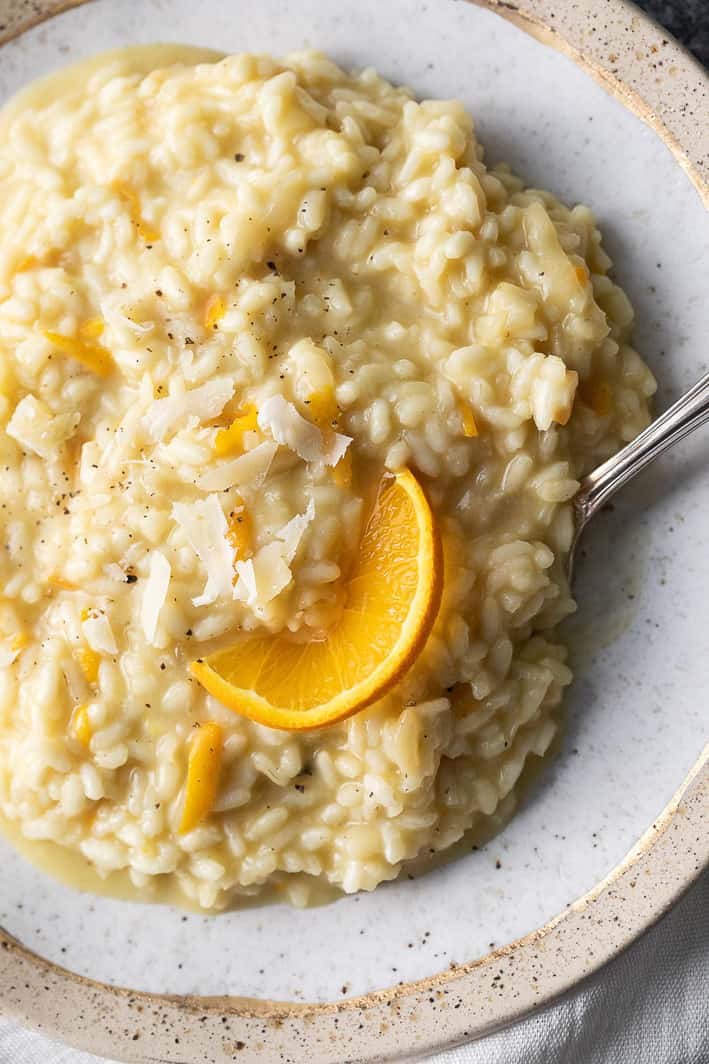
I wasn’t sure I was going to love or even like Risotto with Orange Juice but it was so different that I knew I had to try it. And, Lidia! As in the Queen of Italian Cooking, is talking about it. So, I dove in.
The finished dish is very pretty. Also, see in my photos that the risotto has more liquid around the edges than your standard rice dish, which usually has none. This is the classic risotto feature, which should kind of pool onto the plate. As the dish sits or if you’re reheating leftovers, most of the liquid becomes absorbed back into the rice. See the printable recipe notes for how to accomplish this pooling liquid when reheating any risotto.
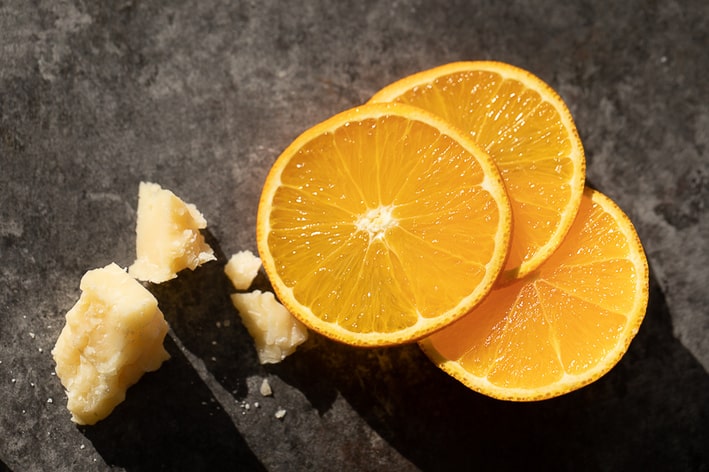
But oranges and Parmesan cheese? I have a wonderful book called The Flavor Bible which references a lot of food items and lists other edibles that pair well with said food (called affinities). And Parmesan is not listed for oranges but I decided to go all in anyway. And as a side note, you should own this book if you like experimenting in the kitchen.
Peeling oranges-
Using a regular vegetable peeler produces great results for Risotto with Orange Juice. This method peels the outside skin without any of the white pith that makes a recipe bitter. Use gentle, short strokes and then chop the peels a little more for perfect bites in the risotto. This is a quick process.
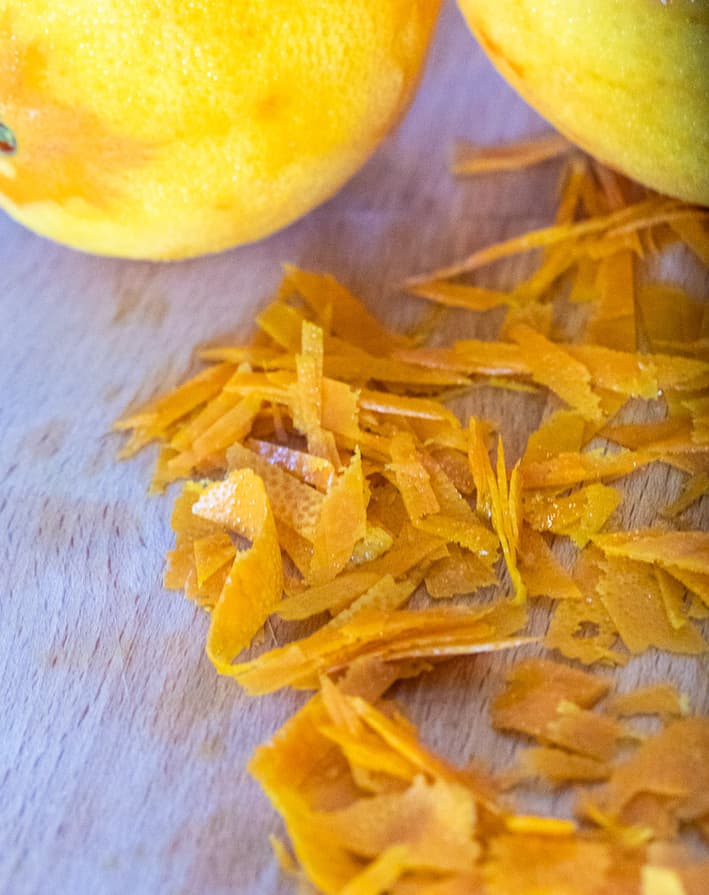
Saute onion and shallot together-
Using both onion and shallot in this recipe creates a perfect blend; the onion adds the savory balanced taste to the sweeter orange peel and juice, and the shallot has a mild garlic flavor that’s just right in any risotto. Lidia recommends cooking the onion and shallot until they just start to turn golden, and I’m up for that, golden color means flavor!
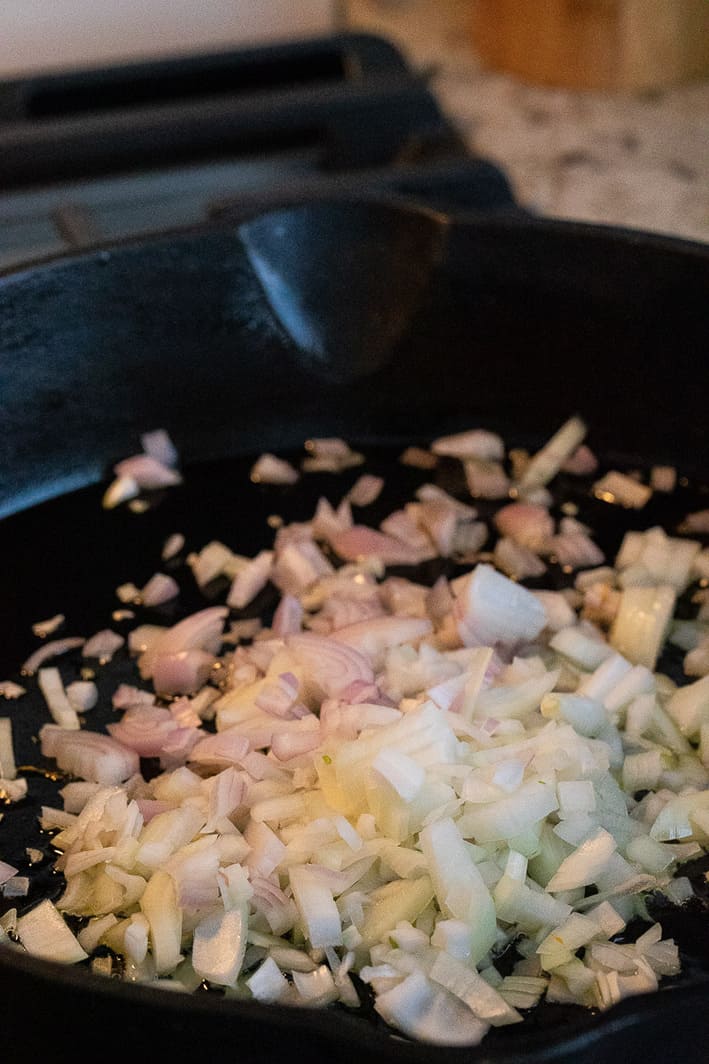
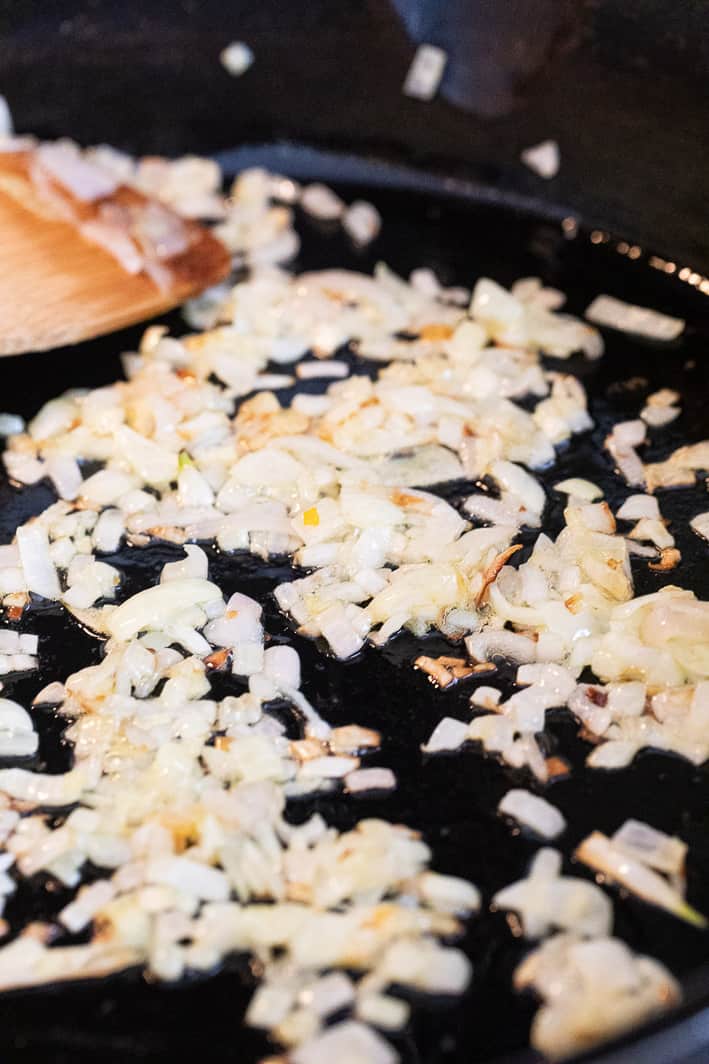
Add risotto to pan-
Stir in the arborio rice and cook until it’s shiny, just a minute or so.
Why use arborio (or carnaroli) rice for risotto-
Arborio is a short grain rice, and when used in risotto this type of rice will give you that creamy-starch that’s imperative in risotto. Some risottos can be made using short-grain brown rice if you like, though the flavor changes quite a bit so I don’t recommend it unless you’re specifically wanting the nutty brown rice flavor (Don’t use it for Risotto with Orange Juice 🙂 ). Carnaroli is another rice that is classically used in risotto outside the United States. It’s considered the “king” of risotto because it’s a little shorter and not as plump as arborio. My personal experience has been that the difference between the two is so insignificant, it’s not worth trying to seek out carnaroli or paying extra for it. A third variety, vialone nano, is supposed to be the prized variety for risotto, though it’s very hard to find.
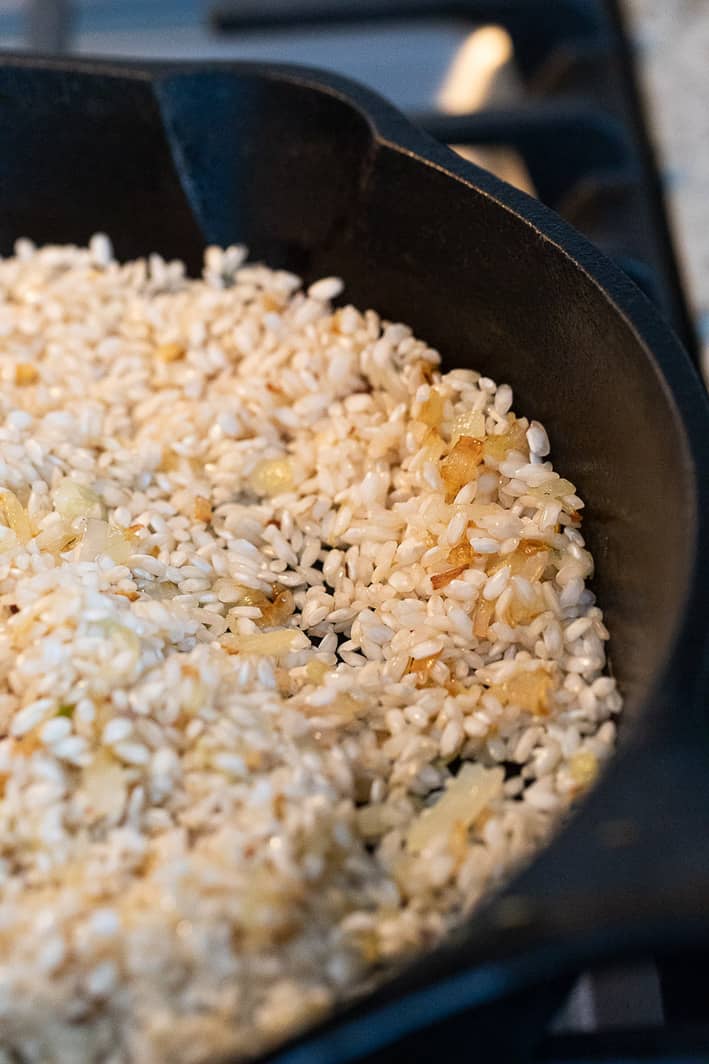
How to add broth to risotto for success-
I keep the broth for the risotto heated in a glass measuring cup (easily put into the microwave if it starts to cool. Or you can keep the broth heated in a second pan on the stove). Then add just enough to the pan so the broth will absorb quickly; about 1/2 cup to 3/4 cup at a time. For the Risotto with Orange Juice, you’ll add the orange peel now so it can spread flavor to the rice and soften for the perfect bite.
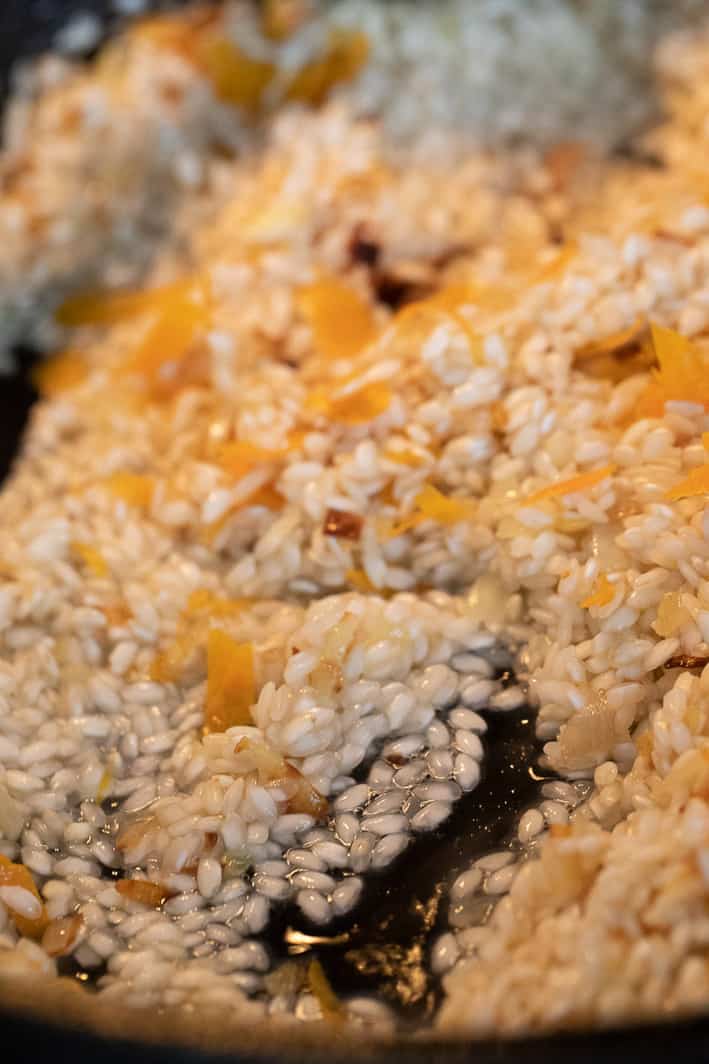
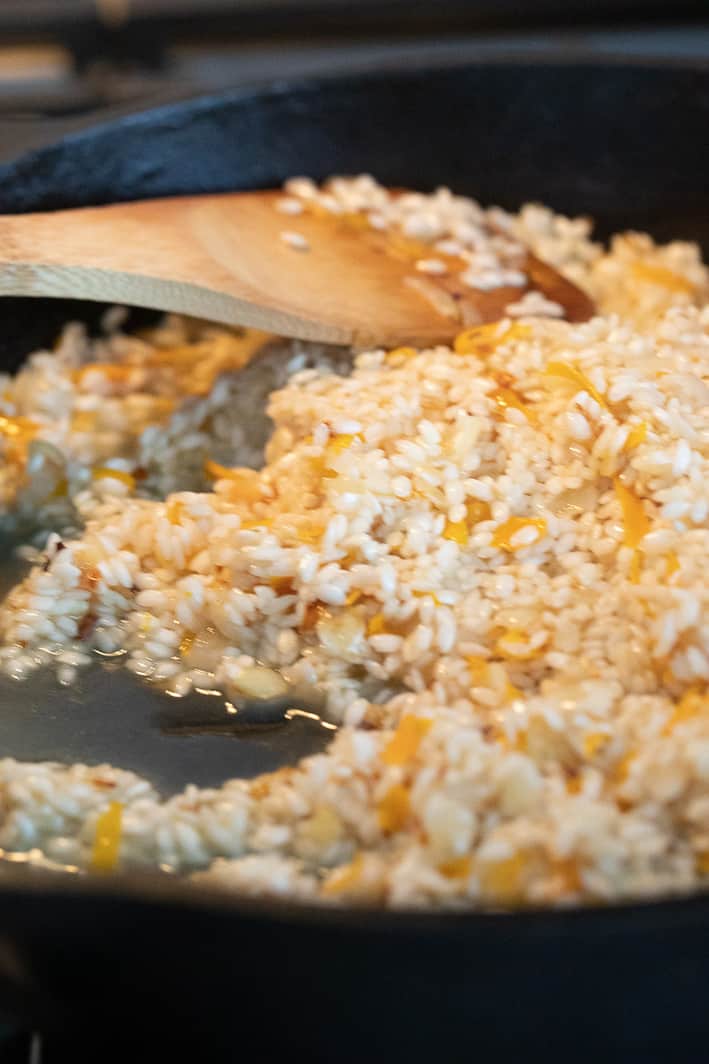
This is the part that most people don’t love about making risotto. You need to tend to it until all the broth is added and evaporated, which takes anywhere from 20 to 30 minutes additional time. I actually love this process, watching the dish come together. I find it very relaxing. If that’s not you, though… just hang in there, it’s worth the effort.
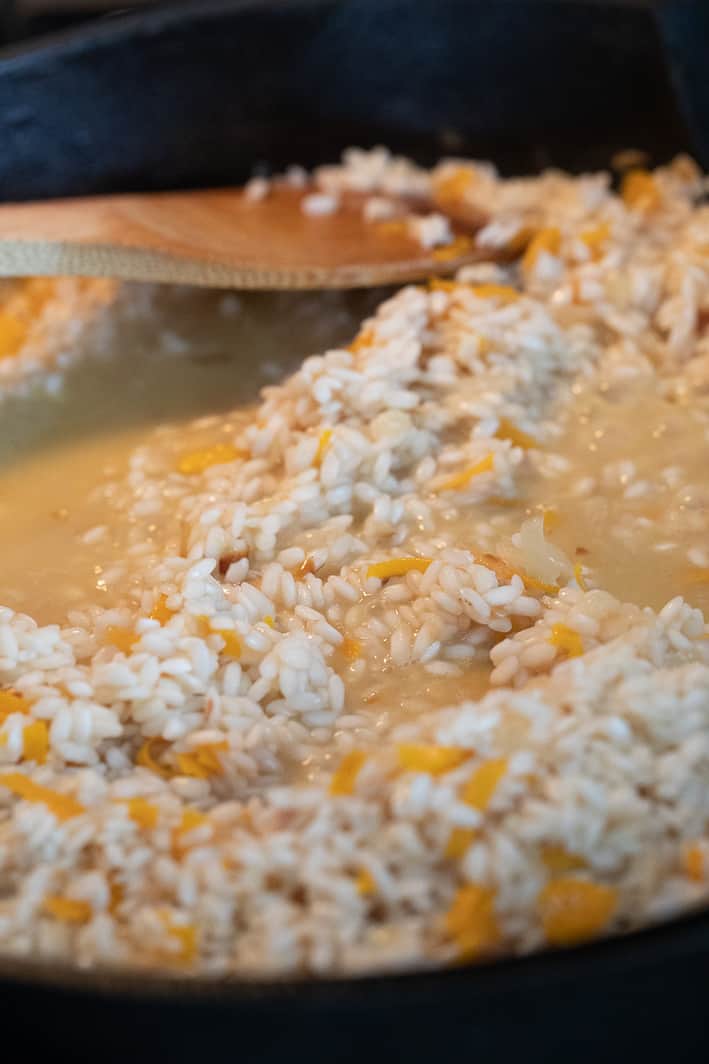
You see the rice increasing in volume, puffing up until perfectly al dente. Risotto is a wet rice dish, so you don’t want the broth to completely disappear. Most risotto recipes work in this manner and the end is where different flavors, cheeses, vegetables, or proteins get added depending on the specific recipe. My classic and popular Mushroom Risotto recipe is a good example.
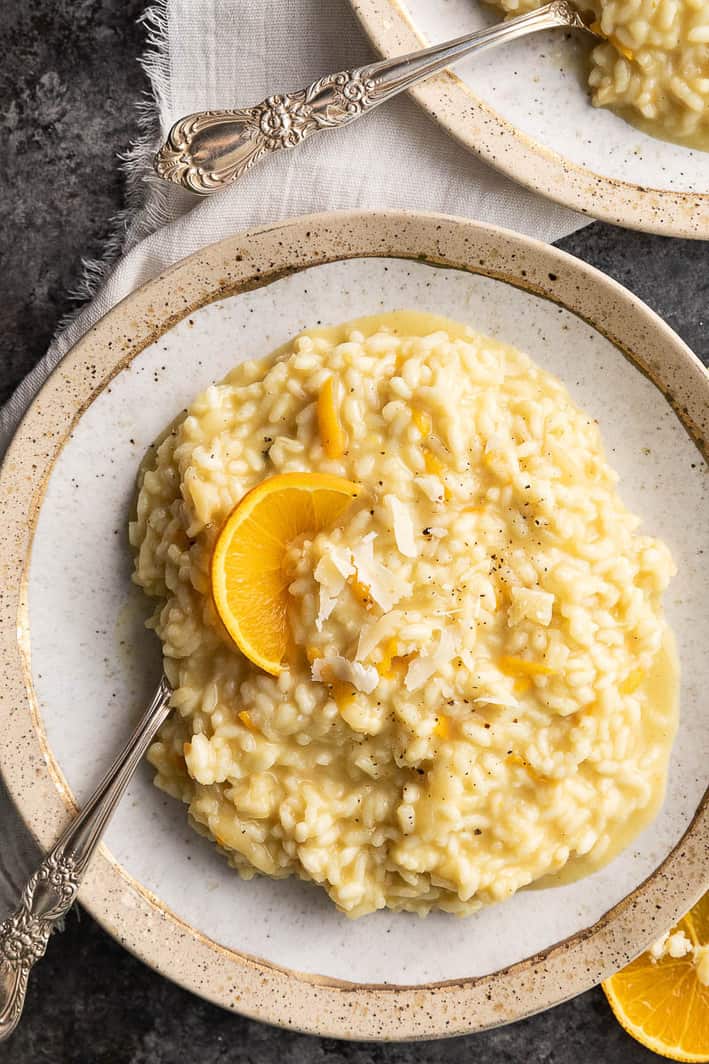
How to reheat risotto-
To reheat leftover risotto, place the risotto in a saucepan over medium heat. The risotto will have absorbed most of the liquid from the initial preparation. While the risotto is reheating, slowly add about 1/4 cup of water (or broth if you have it) at a time until you’re happy with the consistency. Taste for seasoning, plate the risotto and top with shredded or shaved cheese.
If you’re a fan of all types of risotto dishes, be sure to try my Mushroom Risotto with Risotto Tutorial, Lemon and Zucchini Risotto, Mushroom Risotto in the Instant Pot, and Pumpkin Risotto.
Risotto with Orange Juice
Ingredients
- 3 oranges, juicy, with bright unblemished skin
- 3 tbsp extra virgin olive oil
- ½ cup onion, minced
- 2 tbsp shallots, minced
- 2 ½ cup Arborio rice
- ½ cup dry white wine
- 6 cups chicken broth or stock, heated (see recipe notes)
- ¾ cup fresh orange juice, from the 3 oranges at the beginning of the recipe
- 1 tsp salt, more to taste
- ¾ cup Parmigiano-reggiano cheese, shredded, plus more before serving
- 4 tbsp butter, cut into chunks
- fresh ground black pepper, to taste
- 1 orange, an extra to slice for garnish before serving (optional)
Instructions
Prepare the oranges:
- Using a vegetable peeler, remove the rind from two of the three oranges, being careful not to include the white part below the skin as it's bitter (Using a soft touch with the vegetable peeler makes this easy to do. Don't stress if you get a little of the pith). Chop the rinds further into thinner strips, you should have about ½ cup. Juice all three oranges and reserve the juice. Depending on how juicy your oranges are, you'll have between ¾ to 1 cup. Don't sweat if it you have less.
Make the risotto:
- Using a heavy, large pot (I like my large cast iron pan but an enameled stock pot works too), heat 3 Tablespoons olive oil over medium heat for about 30 seconds. Add ½ cup minced onion and 2 Tablespoons shallot. Cook them until golden, stirring often, about 5 minutes.
- Add 2 ½ cups rice and stir to coat with the oil in the pan. Cook the rice until the edges become translucent, only a minute or so. Add ½ cup wine and the sliced orange rind and stir well until the wine is absorbed. This only takes about 30 seconds. Add 1 teaspoon salt and stir again.
- Start the process of adding your chicken broth now (see notes below regarding keeping the broth hot). Add between ½ to ¾ cup at a time, stir until each portion is almost fully absorbed, then continue adding small amounts of the broth, waiting for the rice to absorb it each time before adding more, stirring all the while, almost continuously (all this stirring is making the risotto starchy for that creamy texture you're after). If the broth bubbles too much, turn the heat down a little, you don't want the liquid to steam off before the rice can absorb it. This step can take up to 20 minutes.
- When all the broth has been added and the risotto now has kind of a creamy, starchy thickness to it, add in ¾ cup orange juice and stir again to distribute and absorb. The rice should be creamy and tastes al dente. (See recipe notes if rice's texture is still too firm.)
- Remove from the heat. Add ¾ cup cheese and stir until melted and distributed well. Add 4 Tablespoons butter and also stir until melted. Taste the risotto now, adding more salt if needed, and black pepper, if desired. If you like more cheese in your risotto, you can more at this time, stirring to incorporate.
- Serve immediately, ladling into shallow bowls. Garnish the Risotto with a slice of orange, optionally, for presentation and sprinkle with extra cheese and black pepper.
Notes
- Zesting the oranges- When peeling the oranges, using just a regular old vegetable peeler is the best tool and you only need soft pressure to be able to peel the rind without getting the white pith as well.
- Chicken stock vs. broth- Lidia's original recipe called for chicken stock but I've made this recipe so many times, sometimes using stock, sometimes using broth. It's fine with either. The time that I made the risotto with homemade chicken broth, it was mind-blowing good. However, most of us don't always have or take the time to make our own broth. You will love it with the canned stuff, too.
- Keep the broth hot- It's highly advisable that you keep your chicken broth (or stock) hot during the making of risotto. You can either place broth in a glass measuring cup, heat in the microwave until it's steamy hot and continue to pop it back in to heat a few times as the rice is cooking, or you can have a second saucepan on the stove with your broth in it that you can keep scooping (or pouring directly from the pan) into the risotto.
- Getting the desired softness of the rice- When you've finished adding all your chicken broth and orange juice, give the rice a taste for doneness. If it's not soft enough for you (remember risotto is not cooked to the full fluffy softness of other, regular rice dishes. I'll have a little resistance), it means that you may have rushed the cooking process a bit. Just add up another large splash of chicken broth or water to the risotto, and cook a few minutes more. Taste and repeat until the risotto texture pleases you.
- Sweetness of the oranges- Sometimes the oranges may be quite sweet. If you taste your risotto after adding the juice and you feel like it's too sweet, add about a teaspoon of lemon juice to balance it out. Also, adding a tad more salt and cheese helps with this too (I've only had this happen once. Every other time, the recipe worked just right as written).
- How to reheat risotto- To reheat leftover risotto, place the risotto in a saucepan over medium heat. The risotto will have absorbed most of the liquid from the initial preparation. While the risotto is reheating, slowly add about 1/4 cup of water (or broth if you have it) at a time until you're happy with the consistency. Taste for seasoning, plate and top with more Parmesan.
Recipe adapted from Lidia’s Italy.
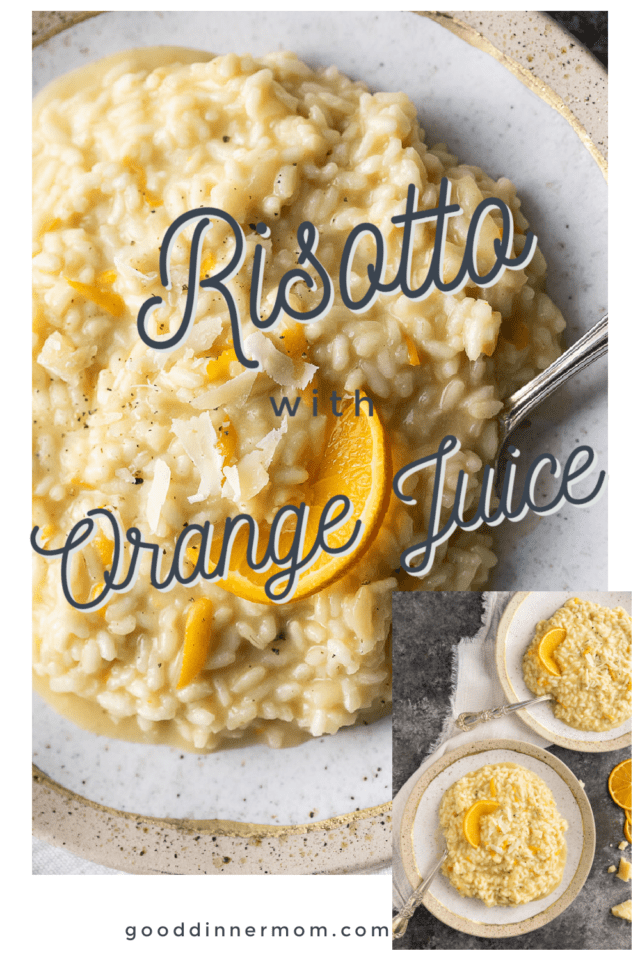


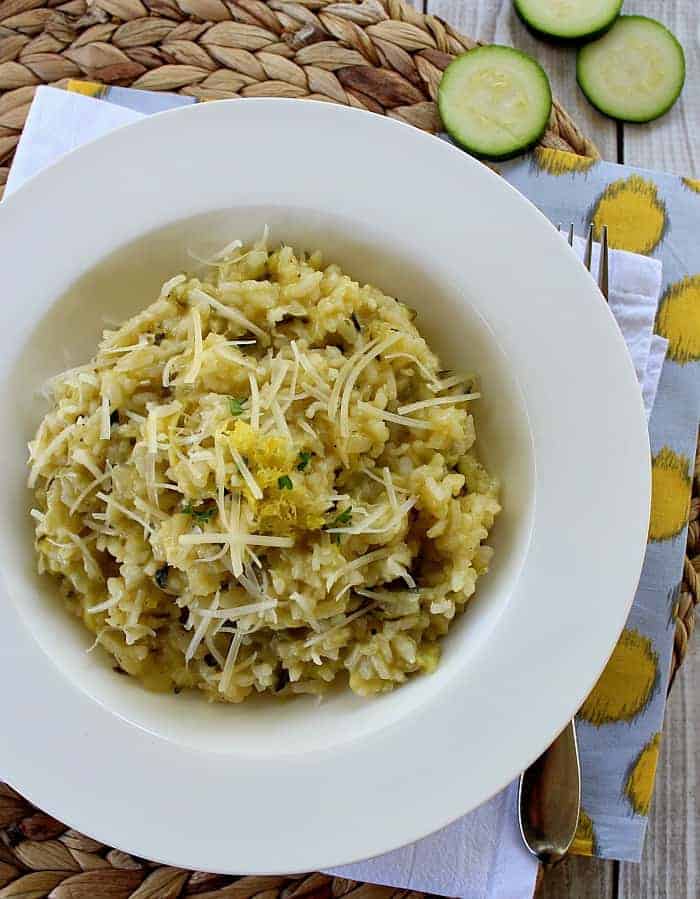
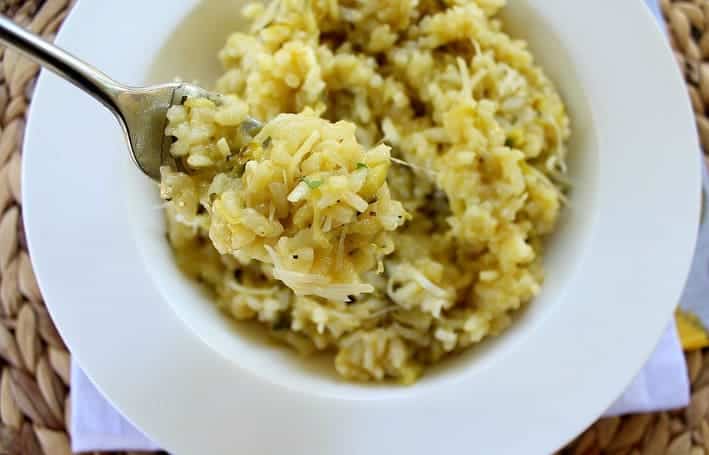
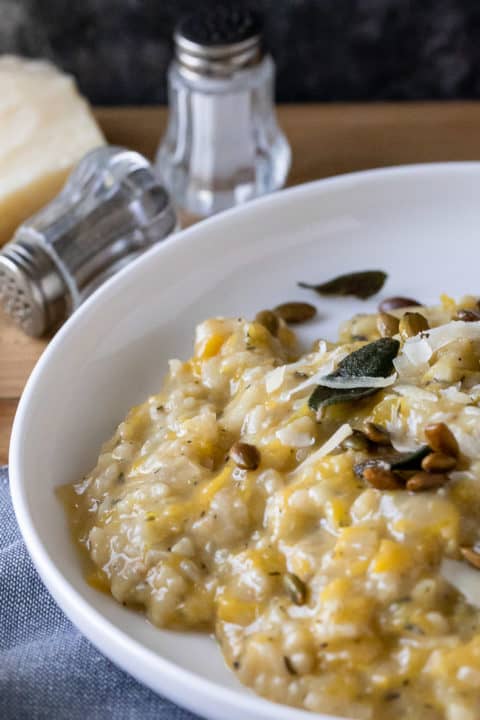

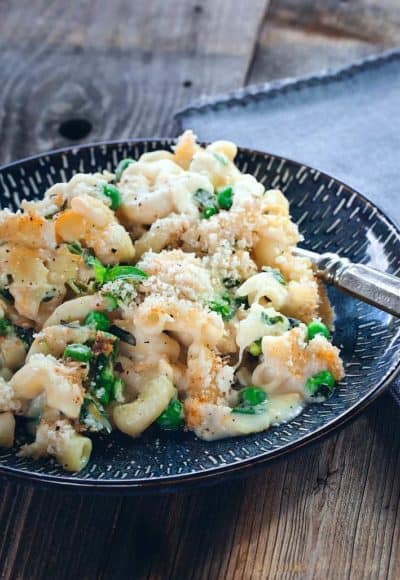




Sally, I have to tell you what a HIT this was at our Easter brunch. I love the it was something different with the orange flavor and went well with everything! Thank you for the post 🙂
Thank you, Maryanne! This made my day. I’m so glad you all liked it.
Glad I tried it, but the flavors aren’t for me! The dish came out great, best-consistency risotto I’d ever made. But I think the combination just wasn’t my favorite.
I make this at least once per month! Have made it for different friends and they all love it too. It’s been added the the family favs recipe book Thanks so much for sharing!
Yum, this looks delicious! My daughter asks me to make risotto all the time, I think I will try this recipe since it is different than the one I normally use.
OH MY! This would be a GREAT side dish for Thanksgiving or Christmas! So different and such wonderful flavors!
A bowl of sunshine. What a delightful meal. Thank you for sharing!
Everything about this sounds heavenly! I’ve made your Perfect Mushroom, and Lemon Zucchini Risottos which were both amazing and easy, I’m definitely adding this one to the list.
Sabrina, thanks so much for making my other risotto recipes! If you liked those, you’re really going to love this one. I appreciate you trying multiple recipes on my site. It means a lot.
I’ve always been intimidated by risotto but this looks beautiful and simple – and only 35 minutes! Maybe it’s time to conquer my fears! Thanks for sharing Sally, cant wait make this!
Hi Marsha! Thanks for your confidence and I really hope you try it. I was just like you before trying risotto. But now I have so many risotto recipes on my site, it’s obvious that I’m hooked. And I hope you will be too!